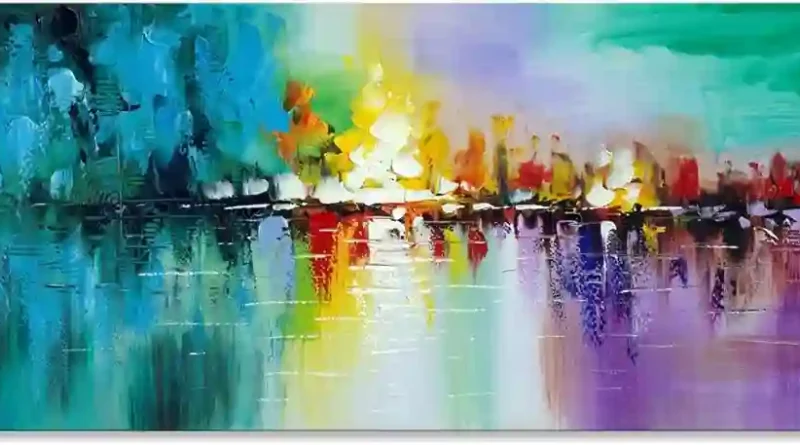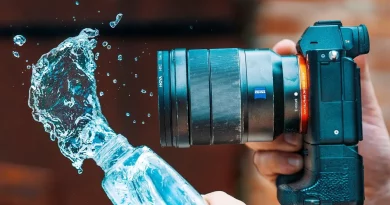Whimsical Worlds: Painting Fantasy Scenes in Oils
Fantasy art has the remarkable ability to transport viewers to enchanting realms filled with magic, mythical creatures, and otherworldly landscapes. When it comes to capturing the essence of these whimsical worlds, oil painting offers a rich and versatile medium for artists to bring their fantastical visions to life. In this article, we will explore the art of painting fantasy scenes in oils, from conceptualization to execution, and the techniques that enable artists to create captivating and immersive realms of wonder.
The Allure of Fantasy Art
Fantasy art holds a special place in the hearts of many art enthusiasts and storytellers. It allows artists to explore boundless creativity, break free from the constraints of reality, and ignite the imagination. Here are some reasons why fantasy art is so compelling:
- Escapism: Fantasy art offers an escape from the mundane and allows viewers to step into extraordinary worlds where anything is possible.
- Myth and Legend: It draws inspiration from mythology, folklore, and legends, connecting with timeless stories and archetypes.
- Creativity Unleashed: Fantasy art encourages artists to push the boundaries of their creativity, inventing new creatures, landscapes, and magic.
- Emotion and Wonder: It can evoke a wide range of emotions, from awe and wonder to fear and curiosity, creating powerful and memorable experiences.
Creating Fantasy Worlds in Oils
Painting fantasy scenes in oils requires a combination of artistic skill, imagination, and storytelling. Here’s a step-by-step guide to help you bring your whimsical worlds to life:
1. Conceptualization and Planning
The first step in creating a fantasy painting is to conceptualize your world. Consider the following aspects:
- Theme and Story: Define the theme or story of your fantasy world. Is it a mystical forest, a magical city, or a quest for a mythical artifact?
- Characters and Creatures: Envision the inhabitants of your world, including heroes, villains, and mythical beings. Develop their characteristics and roles in the narrative.
- Setting and Environment: Design the landscape, architecture, and natural elements of your world. Consider the atmosphere, lighting, and climate.
- Color Palette: Choose a color palette that complements the mood and theme of your fantasy world. Vibrant, otherworldly colors can enhance the magical atmosphere.
- Composition: Plan the composition of your painting, considering the focal points, balance, and flow. Create sketches or digital concept art to visualize your ideas.
2. Materials and Preparation
Before you start painting, gather your materials and prepare your canvas or surface:
- Canvas or Panel: Select a canvas or panel that suits the size and format of your painting. Consider whether you want a smooth or textured surface.
- Oil Paints: Choose high-quality oil paints in a variety of colors. Fantasy scenes often benefit from a wide range of hues and tones.
- Brushes: Use a variety of brushes, including different sizes and shapes, to achieve different textures and details in your painting.
- Palette: Set up a palette with wells for your chosen colors. Keep solvents and mediums on hand for blending and thinning.
- Easel: Use an easel to support your canvas at a comfortable working height. An adjustable easel allows you to paint in various positions.
3. Underpainting and Background
Begin your painting with an underpainting to establish the background and basic forms:
- Blocking In: Start by blocking in the major shapes and forms of your fantasy world. Use a limited color palette to establish the composition.
- Background Elements: Paint the background elements, such as the sky, distant landscapes, or magical atmospheres. Pay attention to the lighting and atmosphere you want to convey.
- Texture and Detail: Add texture and detail to the background to create depth and interest. You can use techniques like scumbling, glazing, and impasto to achieve different effects.
4. Character and Creature Design
Bring your characters and creatures to life with careful attention to detail:
- Character Studies: Create character studies or sketches to refine their appearances, costumes, and expressions. Consider their roles in the narrative.
- Proportions and Anatomy: Ensure that the proportions and anatomical features of your characters and creatures are consistent and believable within the fantasy context.
- Expression and Emotion: Pay special attention to the facial expressions and body language of your characters. Emotion plays a significant role in fantasy storytelling.
- Clothing and Accessories: Design unique clothing, armor, and accessories that reflect the culture and style of your fantasy world.
5. Composition and Focal Points
Compose your painting to guide the viewer’s eye and create a sense of depth:
- Focal Points: Determine the focal points of your painting. These are the areas where you want viewers to focus their attention. It could be a character, a magical object, or a significant element in the scene.
- Leading Lines: Use leading lines, such as pathways, rivers, or architectural features, to lead the viewer’s eye toward the focal points.
- Balancing Elements: Balance the composition by distributing visual weight evenly throughout the painting. Avoid overcrowding or unbalanced compositions.
6. Lighting and Atmosphere
Lighting and atmosphere play a vital role in creating the mood and ambiance of your fantasy scene:
- Source of Light: Decide on the source of light in your scene. Is it natural, such as sunlight or moonlight, or magical, like a glowing crystal?
- Cast Shadows: Create cast shadows to give depth and dimension to your world. Consider how light interacts with different surfaces and materials.
- Atmospheric Effects: Use atmospheric effects, such as haze, mist, or ethereal glows, to enhance the magical and otherworldly qualities of your painting.
7. Details and Finishing Touches
Focus on the finer details and finishing touches to complete your fantasy scene:
- Texture: Add texture to various elements in your world, such as stone, water, or foliage. Use techniques like stippling, cross-hatching, or impasto.
- Highlights and Shadows: Enhance highlights and shadows to create volume and dimension. Consider the direction of light and how it affects different surfaces.
- Magical Effects: If your fantasy world includes magical elements, paint them with care. Create enchanting effects using translucent glazes, sparkling highlights, or ethereal colors.
- Reflections and Refractions: Depict reflections in water, glass, or magical surfaces. Consider how light is bent and distorted in fantastical environments.
8. Storytelling and Narrative
Lastly, infuse your fantasy scene with storytelling elements:
- Narrative Details: Include subtle narrative details that hint at the story within
your painting. This could be a hidden object, a mysterious figure in the background, or symbols that convey meaning.
- Emotion and Interaction: Show the emotions and interactions between characters and creatures in your scene. These visual cues can engage viewers on an emotional level.
- Imagination and Interpretation: Leave room for viewers to use their imaginations and interpret the story. A degree of ambiguity can invite curiosity and engagement.
9. Final Inspection and Touch-Ups
Before considering your painting complete, conduct a final inspection:
- Quality Check: Examine your painting for any imperfections, areas that need refinement, or inconsistencies in details.
- Color Harmony: Ensure that the colors in your painting harmonize well and convey the intended mood.
- Overall Composition: Step back and view your painting from a distance to assess the overall composition and impact.
- Signature: Sign your painting in a discreet but legible location, typically in the corner. Consider the style and placement of your signature.
10. Exhibition and Sharing
Once your fantasy scene is completed, you have several options for sharing your artwork with the world:
- Gallery Exhibitions: Submit your painting to galleries that specialize in fantasy or contemporary art. Participating in exhibitions can provide exposure and potential sales opportunities.
- Online Portfolios: Create an online portfolio or website to showcase your fantasy artwork. Social media platforms and art-sharing websites can also help you reach a global audience.
- Prints and Merchandise: Consider producing limited-edition prints or merchandise featuring your fantasy scene. This can expand your reach and offer affordable options for art enthusiasts.
- Art Communities: Join art communities and forums where you can connect with fellow fantasy artists, receive feedback, and gain inspiration.
- Commissions: Offer commissioned artwork to clients who are interested in personalized fantasy scenes or illustrations.
Conclusion:
Painting fantasy scenes in oils is a journey into a world of boundless imagination, creativity, and storytelling. With careful planning, attention to detail, and a deep connection to your artistic vision, you can transport viewers to whimsical realms where dreams and reality intertwine. By infusing your fantasy world with narrative elements, emotion, and a sense of wonder, your paintings can captivate and enchant, inviting viewers to embark on their own imaginative adventures within your art. Ultimately, fantasy art in oils offers a unique and magical avenue for artists to express their innermost visions and share them with the world.




